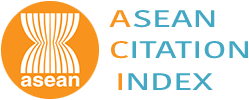Venous Thromboembolism Prophylaxis and The International Medical Prevention Registry on Venous Thromboembolism (IMPROVE) Score in Medical Illness Patients
Abstract
Objective: To describe applicability of The International Medical Prevention Registry on Venous Thromboembolism (IMPROVE) score to implement venous thromboembolism prophylaxis in patients with medical illness in Hasan Sadikin General Hospital Bandung.
Methods: This study was descriptive, cross-sectional research from database was performed on December 2018. Inclusion criteria in this study were all patients hospitalized in Department of Internal Medicine, Hasan Sadikin General Hospital in November 2018 with medical illness, which is patients with medical condition involves a more systemic, pharmaceutical approach to treatment. Exclusion criteria were surgical disease, which is requires some form of intervention such as surgery, also patients with incomplete medical record were excluded.
Results: There were 162 patients (56% male and 44% female). Median age were higher in males compared to females (53 [18-76] vs. 49 [18-85]) years. Low-risk (score <2), medium-risk (score 2 – 3), and high-risk (score >4) for IMPROVE venous thromboembolism score were 77.2%, 17.3%, and 5.6% respectively. ). Low-risk (score <7) and high-risk (score >7) for IMPROVE bleeding score were 75.9% and 24.1% respectively. Medical thromboprophylaxis were given to 14.8% patients, with 91.7% and 8.3% of the patients received unfractionated heparin (UFH) and low-molecular weight heparin (LMWH) respectively. Thromboprophylaxis was given in 88.9% of high-risk patients for venous thromboembolism. There were 18.7% patients with low-risk and 2.6% with high-risk for bleeding that received prophylaxis.
Conclusion: The majority of inpatients treated with thromboprophylaxis had low-risk for both thromboembolism and bleeding. The rate of thromboprophylaxis usage was still low; with the most frequently used thromboprophylaxis agent was UFH. Most of high-risk patients for venous thromboembolism received thromboprophylaxis.
Keywords
Full Text:
PDFReferences
Goldhaber SZ, Bounameaux H. Pulmonary embolism and deep vein thrombosis. The Lancet. 2012;379(9828):1835–46.
Members ATF, Konstantinides SV, Torbicki A, Agnelli G, Danchin N, Fitzmaurice D, et al. 2014 ESC Guidelines on the diagnosis and management of acute pulmonary embolism: The Task Force for the Diagnosis and Management of Acute Pulmonary Embolism of the European Society of Cardiology (ESC) Endorsed by the European Respiratory Society (ERS). Eur Heart J. 2014;35(43):3033–80.
Heit JA, Spencer FA, White RH. The epidemiology of venous thromboembolism. J Thromb Thrombolysis. 2016;41(1):3–14.
Goldhaber SZ. Venous thromboembolism: epidemiology and magnitude of the problem. Best Pract Res Clin Haematol. 2012;25(3):235–42.
Delluc A, Tromeur C, Le Ven F, Gouillou M, Paleiron N, Bressollette L, et al. Current incidence of venous thromboembolism and comparison with 1998: a community-based study in Western France. Thromb Haemost. 2016;116(11):967–74.
EINSTEIN–PE Investigators, Büller HR, Prins MH, Lensin AW, Decousus H, Jacobson BF, et al. Oral rivaroxaban for the treatment of symptomatic pulmonary embolism. N Engl J Med. 2012;366(14):1287–97.
Rosenberg DJ, Press A, Fishbein J, Lesser M, McCullagh L, McGinn T, et al. External validation of the IMPROVE Bleeding Risk Assessment Model in medical patients. Thromb Haemost. 2016;116(3):530–6.
Spyropoulos AC, Anderson Jr FA, FitzGerald G, Decousus H, Pini M, Chong BH, et al. Predictive and associative models to identify hospitalized medical patients at risk for VTE. Chest. 2011;140(3):706–14.
Spyropoulos AC, Raskob GEJTH. New paradigms in venous thromboprophylaxis of medically ill patients. 2017;117(9):1662–70.
Decousus H, Tapson VF, Bergmann J-F, Chong BH, Froehlich JB, Kakkar AK, et al. Factors at admission associated with bleeding risk in medical patients: findings from the IMPROVE investigators. Chest. 2011;139(1):69–79.
Rosenberg D, Eichorn A, Alarcon M, McCullagh L, McGinn T, Spyropoulos AC. External validation of the risk assessment model of the International Medical Prevention Registry on Venous Thromboembolism (IMPROVE) for medical patients in a tertiary health system. J Am Heart Assoc. 2014;3(6):e001152.
Abdel-Razeq H. Venous thromboembolism prophylaxis for hospitalized medical patients, current status and strategies to improve. Ann Thorac Med. 2010;5(4):195-200.
Nagase Y, Yasunaga H, Horiguchi H, Hashimoto H, Shoda N, Kadono Y, et al. Risk factors for pulmonary embolism and the effects of fondaparinux after total hip and knee arthroplasty: a retrospective observational study with use of a national database in Japan. Bone Joint Surg Am. 2011;93(24):e146.
Junqueira DR, Zorzela LM, Perini E. Unfractionated heparin versus low molecular weight heparins for avoiding heparin‐induced thrombocytopenia in postoperative patients. Cochrane Database Syst Rev. 2017;4(4):CD007557.
DOI: https://doi.org/10.15850/ijihs.v8n1.1773
Article Metrics
Abstract view : 779 timesPDF - 393 times
This Journal indexed by

IJIHS is licensed under a Creative Commons Attribution-NonCommercial 4.0 International License
View My Stats




